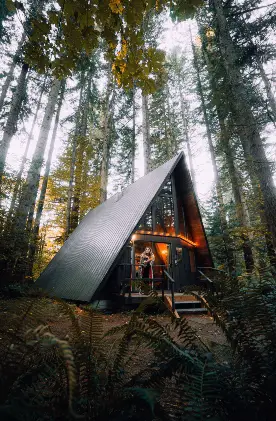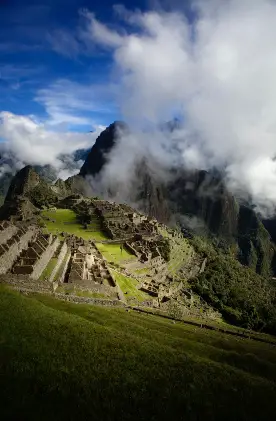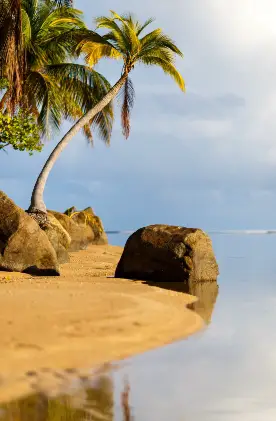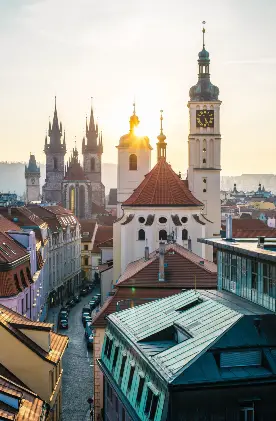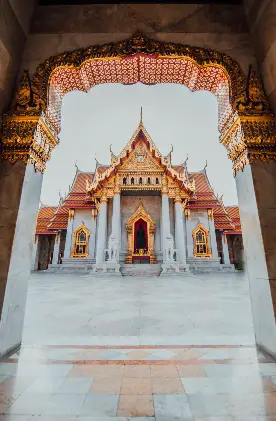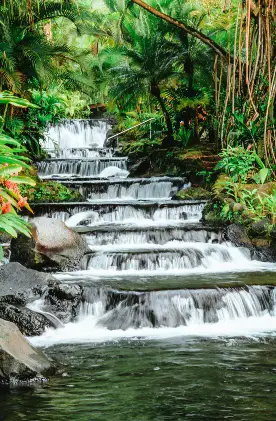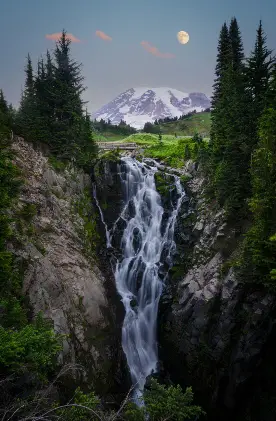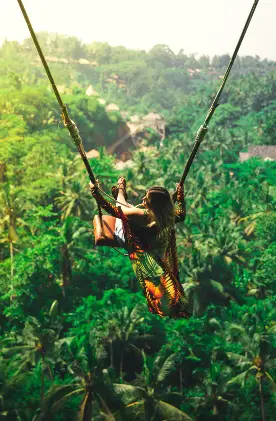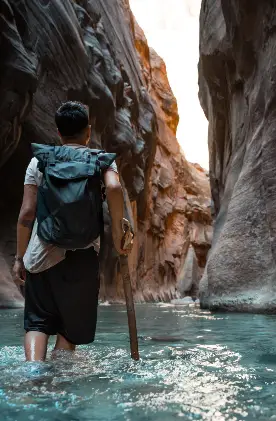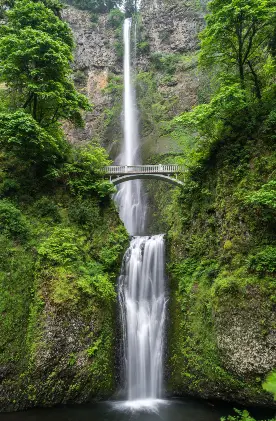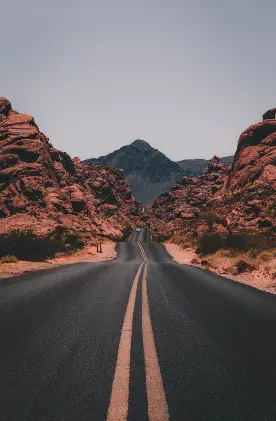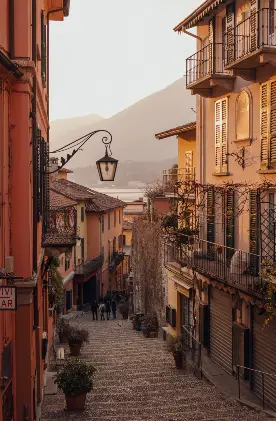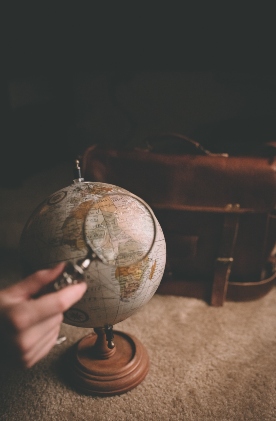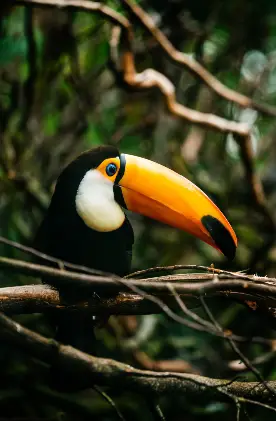My name is Geoff Brown, and I’m a mountain guide and the founder of Into The Berg. I grew up near Durban (a few hours from the Drakensberg) and was always drawn more to the mountains than the ocean. My family had hiked the Drakensberg for two generations and I started from as soon as I could walk. We also hiked the mountains of the Cape, including an annual summit of Table Mountain, but the Drakensberg has always been my preferred hiking location.
I guide hikes in the Drakensberg, and it’s the pinnacle of hiking in South Africa. As a UNESCO World Heritage Site its unspoiled wilderness areas are unrivaled, and it’s home to all of the highest peaks and passes in South Africa. I lead multi-day hikes with a maximum of six guests with the aim of providing a good challenge, but with time to also unwind and connect at the chosen wild campsites or caves.
We provide the tents, all of the food, snacks and hot drinks. Guests are required to carry their clothes, sleeping bags and mats, and their snacks. We provide guests with insight into the history, flora and fauna of the area, and pride ourselves in laying out the highest quality meals, provisions and aeropress coffee.
Why the Drakensberg is a Hiker’s Paradise
If you are an adventurer, the Drakensberg is the top destination for hiking in Southern Africa. Foreign guests who may have pictured Africa as savannah and plains are often amazed at the scale of the range, and I have come across many well traveled hikers who place the Drakensberg at the top of their hiking experiences.
Created during probably the world’s largest ever volcanic eruption, the basalt cliffs of the high Berg ascend approximately 1,000 meters to 1,500 meters out of the lower sandstone layers to roughly 3,000 meters above sea level.
As a protected World Heritage Site, it’s also a well kept secret and you are unlikely to see more than a handful of people (and oftentimes no one else) during your three or four days on the mountain. The mountains are rugged, the camps are wild, and the flora and fauna is vast. All of the water is pristinely clean and you can also hike all year around.
5 Best Hikes in the Drakensberg
1. Bell Traverse
This majestic and diverse hike provides close encounters with numerous peaks over a four-day, 35 kilometer journey. It’s a hike that could be easily covered in three days, but we prefer mixing up the challenging hike with enough time to appreciate the scenery and company.
The four days offer a great mix of terrain and the nights provide contrasting Drakensberg wilderness environments: one in a lush forested river valley, the next on the alpine Lesotho plain and the last perched on the edge of cliffs just below the peaks.
Starting at Cathedral Peak hotel we spend the first night next to the Mlambonja river at the base of the pass. You are afford beautiful views up and down the valley, and have a big pool for swimming. Day two is a half day hike up the notorious Mlambonja pass, and we camp either in Twins Cave or over the ridge in Lesotho next to the Kwakwatsi river.
We usually arrive around lunch time and spend the afternoon soaking in the scenery along the escarpment, swimming, and of course a few coffee breaks. If all goes well weatherwise, we enjoy a night under the stars in the stillness of Lesotho.
Day three is the highlight, traversing from Twins Cave just below some major peaks like the Mitre, Inner Horn, Outer Horn, the Chessmen, the Bell and of course Cathedral Peak. There are one or two tricky sections but for the most part it’s an almost miraculously easy contour for six kilometers between all of these peaks, making it a unique berg experience.
We take our time, winding along with regular stops, to take in the scenery before Bugger Gully (towards the end) provides a final challenge. We then make camp at the base of Cathedral Peak.
The 360-degree views from this site are incredible, with resident cape eagle owls calling when you are nodding off. You can even position your tents to catch the sunrise with a view all the way to Champagne Castle towards the South East. Day four we make an easy descent via Orange Peel Gap, and back to the hotel for a well deserved lunch and some storytelling.
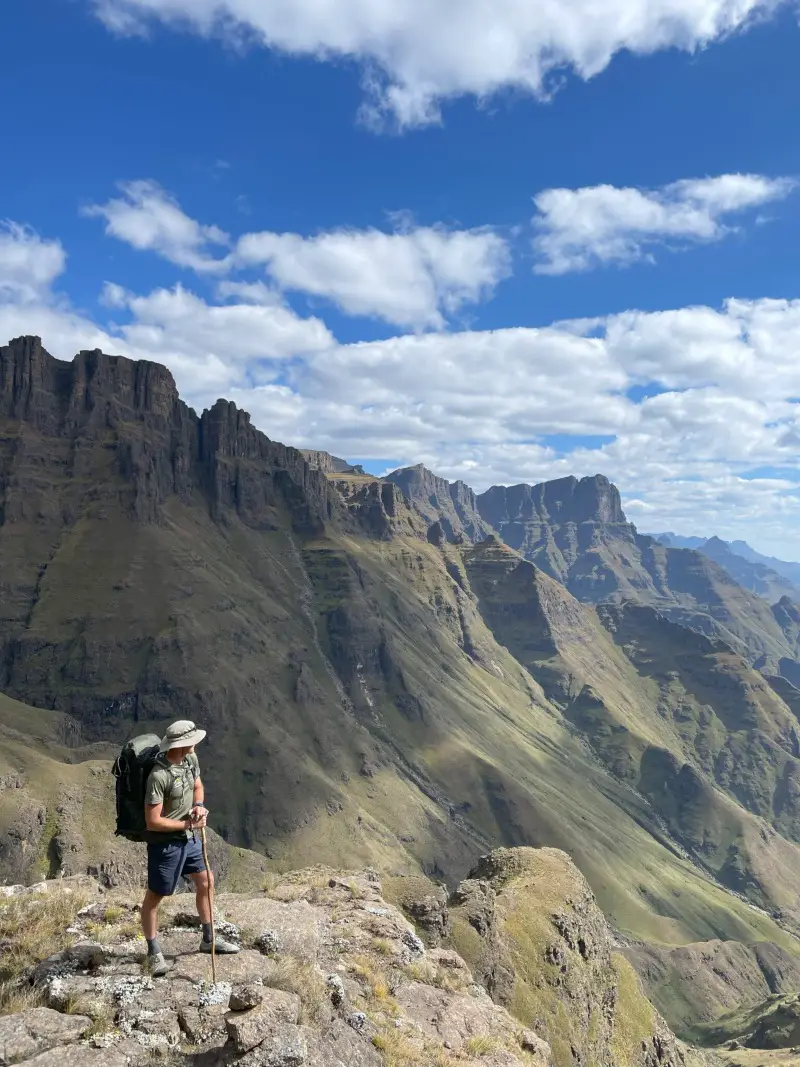
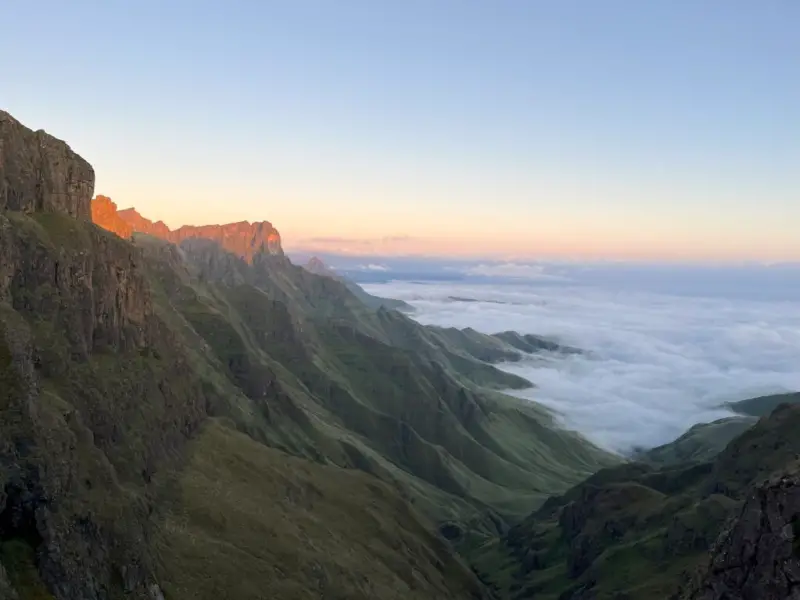
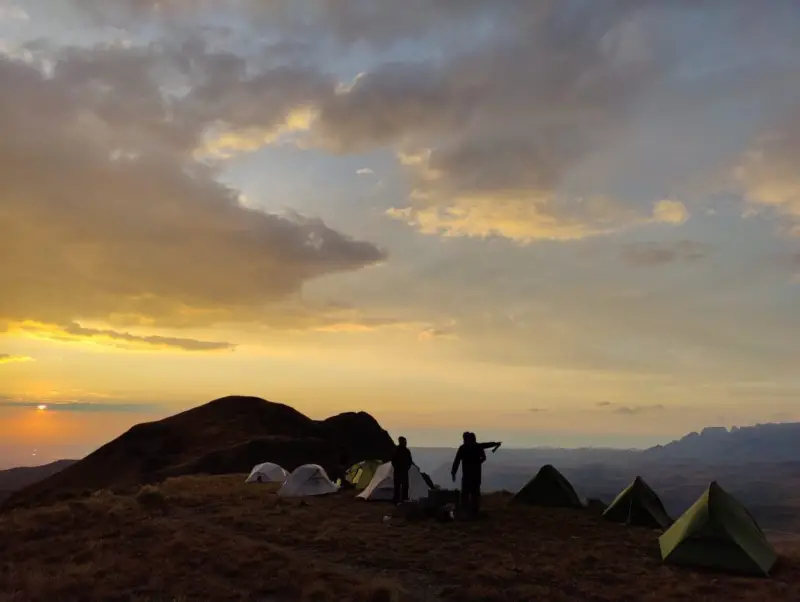
2. Mnweni Circuit
Mnweni Circuit is rugged and wild, features incredible towers and spires, and traverses 34 kilometers of trail with a 2,303 meter elevation gain. This is another hike that could be easily covered in three days, but again we prefer mixing up the hike with time to appreciate the scenery and company.
The first day is a 12 kilometer amble up the Mnweni valley from the drop off at the head of the trail, never far from the bubbling Mweni river (major tributary into Tugela). You can pack a fly rod for a few casts during lunch, and camp in a beautifully secluded spot in the riverbed two kilometers from the base of Mnweni pass.
Day two sees you ascend the extraordinary Mweni pass. A wide, steep and winding donkey trail for much of the way – you are unlikely to see another soul but you get the feeling you are walking 200 years ago on an ancient trade route. Towards the top of the route it becomes less distinct and you then pick your route between the numerous spiers, over the boulders and grassy patches.
Just on the other side of the summit is the source of the Orange (Senqu) river, already flowing strong through an orangy riverbed. We then take a steady two-and-a-half kilometer climb around the hill to the notorious Mponjwane cave which sits adjacent to the impressive and slightly menacing Mponjwane (Rockeries) Tower. The sunrise from just above the cave, with views towards Cathedral and the Bell Traverse is the best I have experienced in the berg.
Day three is an easy amble down the iconic Rockeries Pass. One of the easier passes in the region, it provides first class photography opportunities of the numerous Rockeries peaks and the towering North Peak of the saddle. In the rainy season the whole pass is flanked with countless waterfalls on either side of you.
At the base is the ‘station’ campsite. With its clean grassy patches, it’s about as close as you get to ‘standard’ camping in the berg wilderness. Nquaza pass sits to the west, and the views up and down the Rockeries are spectacular.
Day four is a slow start, taking in a good coffee and the sunrise on the peaks above before an easy six-and-a-half kilometer stroll down the valley to the pick-up point. After leaving the camp we enter a whole new environment of flowers, trees and ferns, pass some amazing pools and get offered probably the best views of the bergs famous Saddle.
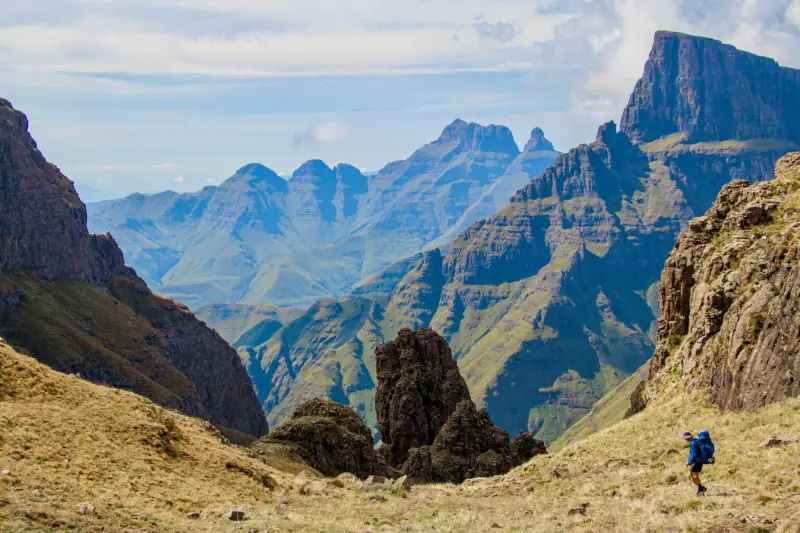
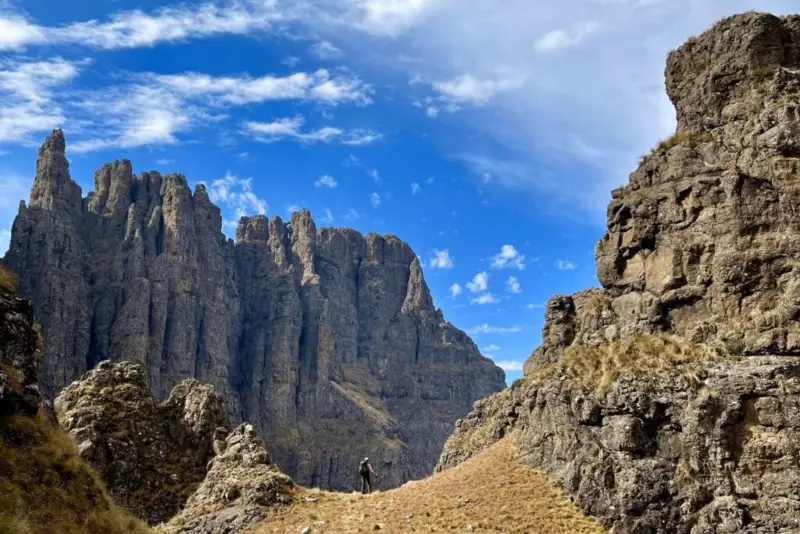
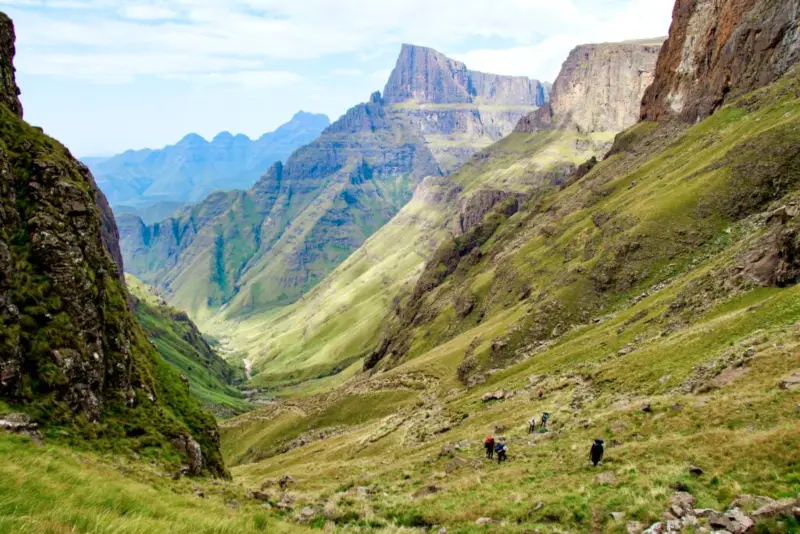
3. Monks Cowl, Gray’s Pass
Monks Cowl, Gray’s Pass is defined by its sheer beauty, green valleys and awesome basalt blocks. Over two nights and three days, you will cover about 46 kilometers with an elevation gain of 2,224 meters.
Even though this route covers more distance than the others in less time, it’s actually an easier overall hike due to summiting without backpacks. On day one we depart from Monks Cowl campsite and climb steadily onto the little berg plateau above the Sphinx, and then across to Blindmans Corner with impressive views of Sterkhorn and Cathkin ahead.
We have lunch next to a stream below the Amphlett, and from there it’s an easy contour for about six kilometers around the base of Sterkhorn and into the Mhlwazini valley – the renowned Intunja/Gatberg towering above it towards the north. After crossing the river, we head up the valley to Keith Bush camp at the base of Gray’s Pass.
Probably my favorite campsite in the berg Keith Bush camp is elevated above the river, and sits within a bowl of peaks including Cathkin and Monks Cowl. If you spend any amount of time there you are also likely to see some of the residents: klipspringer, rhebuck, drakensberg rockjumper, spotted genet, bearded vulture, verreaux’s eagle and cape eagle owl.
On day two we ascend Gray’s Pass, stroll down to Vulture’s Retreat and Nkosazana falls for lunch, see the sheer cliffs above, and get views down the Dragon’s back and across to the Cathedral Range. After lunch, we descend the pass back to camp for tea and a swim. Day three then involves walking back to Monks Cowl campsite with lunch at a breakfast stream.
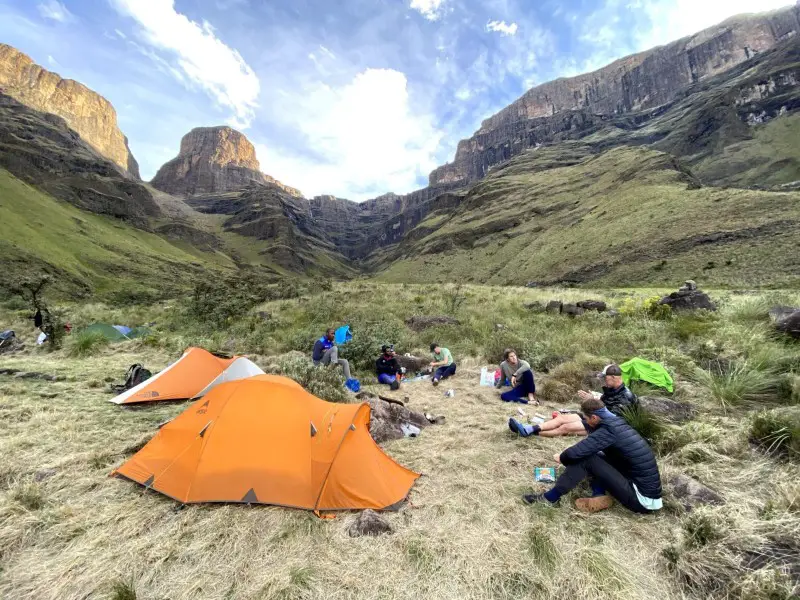
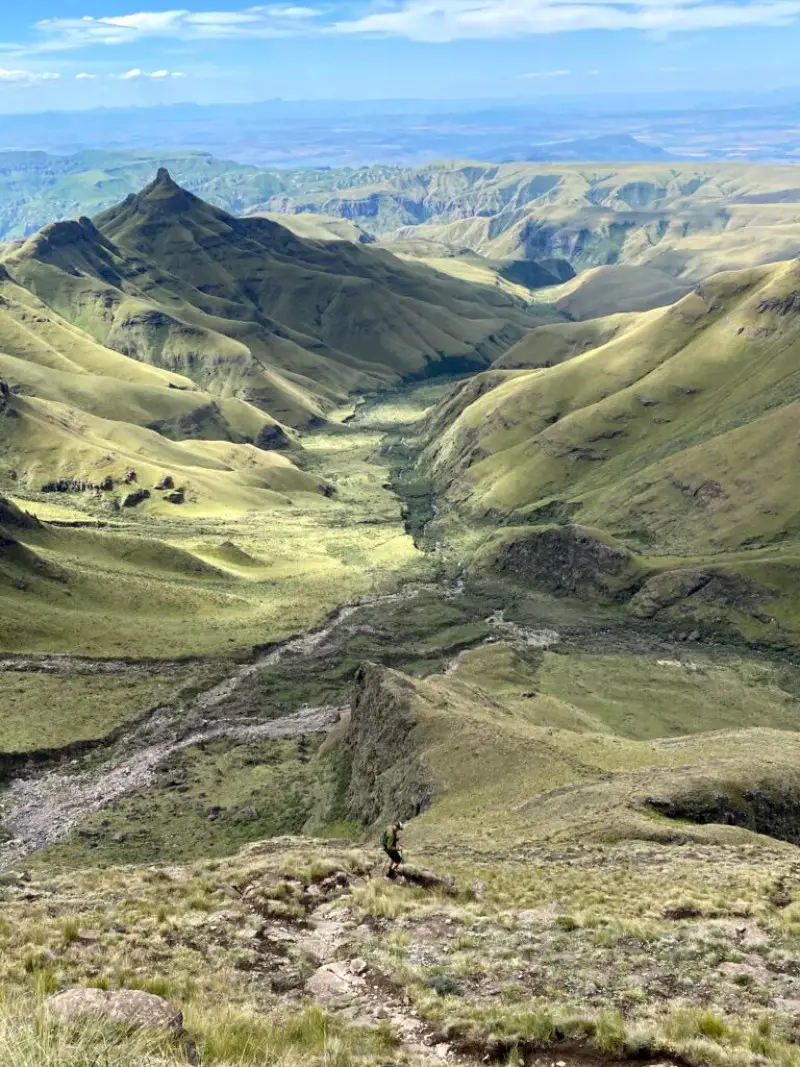
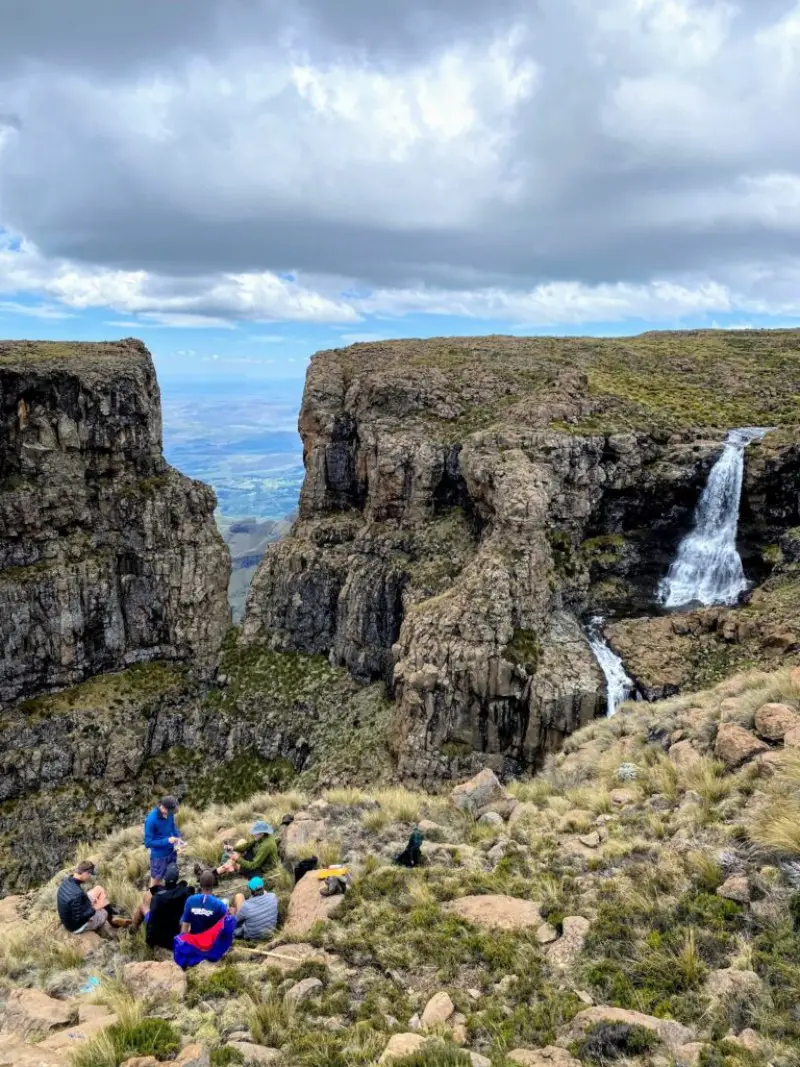
4. Mini Traverse
Three nights, four days, 48 kilometers, 2,031 meters of elevation gain, chain ladders, the highest falls in the world and high altitude views are all in store on the Mini Traverse.
Regarded as one of the most scenic hikes on the planet, this hike from Sentinel to Mnweni differs from most of our other scheduled hikes in that most of it takes place in and around Lesotho – with a large part of the hike off trail as we follow the scenic route along the edge of the escarpment. Whilst not the most difficult in terms of elevation gains, the off trail terrain and potentially harsher weather conditions require hikers to be sufficiently prepared.
Day one starts at the Sentinel Car Park. We head up the chain ladders onto the escarpment and have lunch at the recently claimed highest falls in the world. We then trek across the amphitheater towards the eastern buttress to set up camp with amazing views near the shear amphitheater wall – which is roughly three times the size of the total combined area of all the cliff faces in Yosemite’s famous El Capitan and more than 10 times the size of El Capitan’s most famous (South Western) face.
Day two sees us head through the valleys of Lesotho near the escarpment edge to Mbundini Abbey, and the home of the beautifully picturesque Madonna and her worshipers. On day three we head past Pins buttress and around the Mnweni cutback to the source of South Africa’s biggest river (the Orange), and up to the historic Mponjwane cave for our final night. On day four we trek down off the escarpment via the Rockeries pass, with vulture colonies and numerous waterfalls descending off the cliffs on either side.
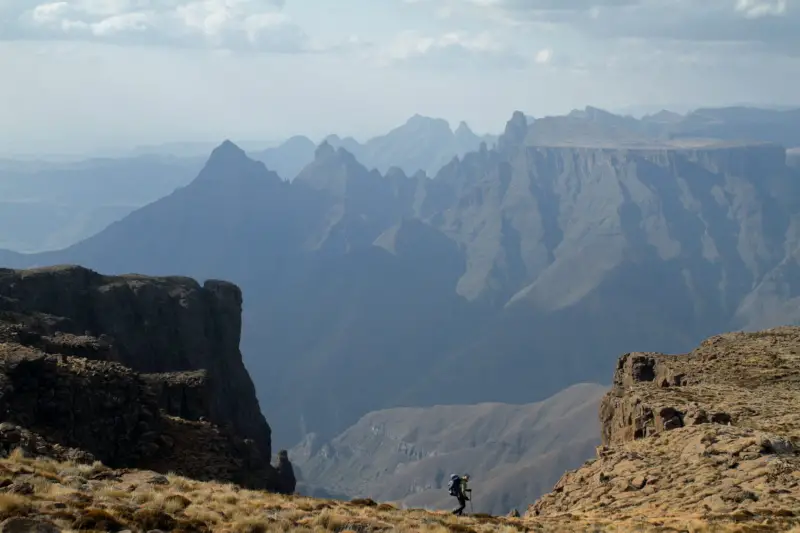
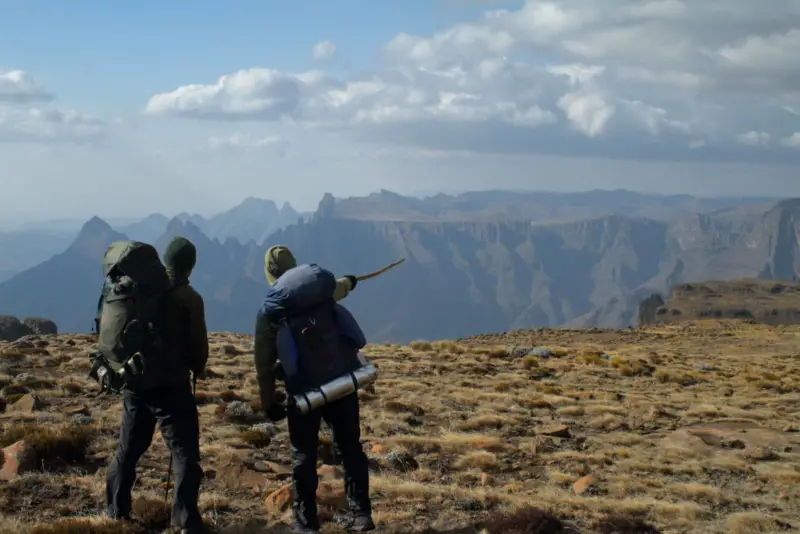
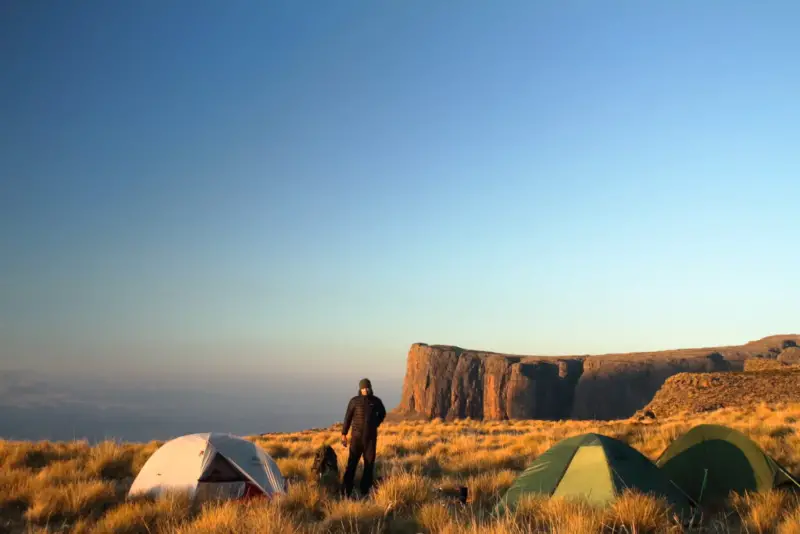
5. Bannerman’s Pass
Expect rolling ridges and cascading waterfalls on this legendary Drakensberg hike. It consists of two nights, three days, 33 kilometers and 1,966 meters of elevation gain. A perfect beginners summit experience in the Drakensberg, this hike starts at Giants Castle rest camp and we spend two nights in Bannerman’s Hut – one of the only man made structures in the Drakensberg wilderness.
On day one we cross the beautiful Bushmans river near the camp and head up the grassy ridges to the contour path, before heading north to Bannerman’s Hut which lies at the base of Bannerman’s Pass.
We leave our gear with my assistant at the hut on day two and head up Bannerman’s Pass for lunch. One of the easier passes, it still involves some steep gully hiking with stunning waterfalls descending from the cliffs above. We descend again in the afternoon to catch the sunset on the mountains above. On day three we return on a longer loop on the contour path, via the historic Langalibelele ridge, and past the most world famous Giants Castle Bushman Rock Art Caves.
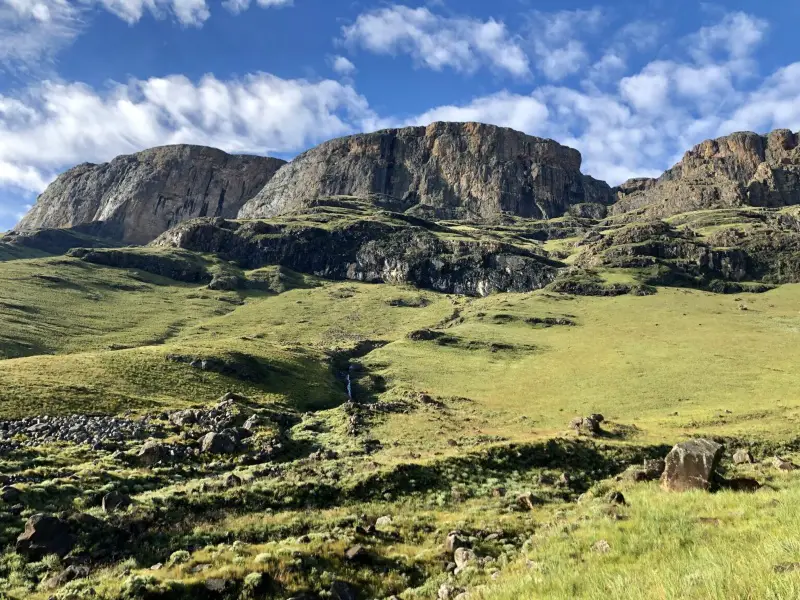
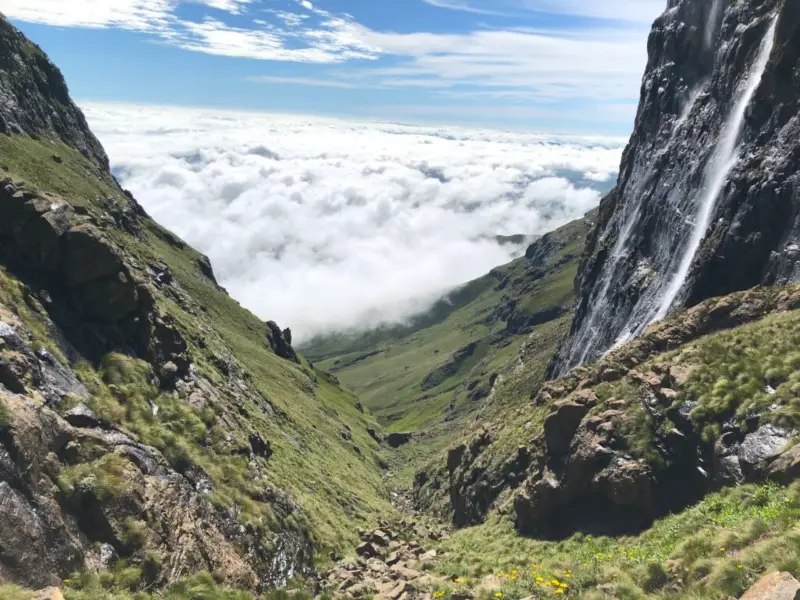
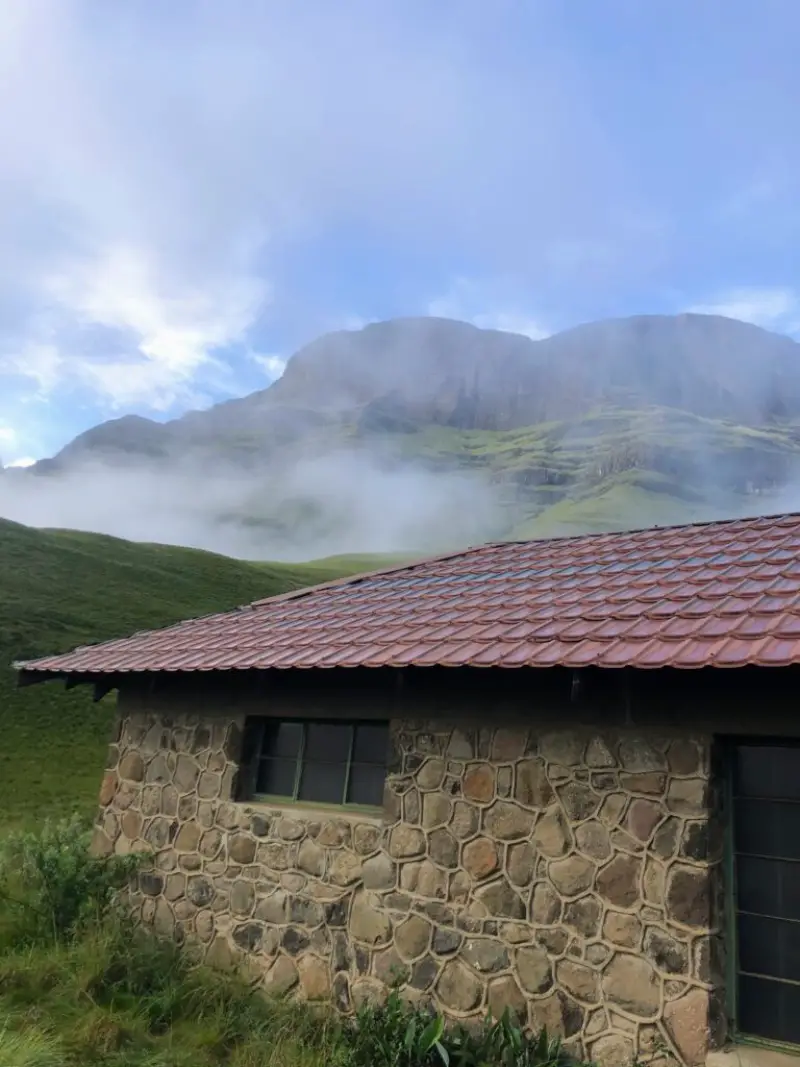
Where to Stay in the Drakensberg
Choosing your best accommodation option for the Drakensberg depends on what hike(s) you intend doing. If you are looking for five-star accommodation, then Inkungu Boutique Hotel in the Champagne Valley is recommended. But if you are simply wanting to be positioned nearest to the mountains, then my traditional berg hotel recommendations are:
- Northern Drakensberg: Witsieshoek Mountain Lodge or Thendele Camp
- Central Drakensberg: Cathedral Peak Hotel, Champagne Castle Hotel, Drakensberg Sun Resort or Giants Castle Rest Camp
- Southern Drakensberg: Drakensberg Gardens, Bushmans Nek Hotel or Lake Naverone
When to Go Hiking in the Drakensberg
Traditionally, the best hiking seasons in the Drakensberg are autumn (April/May) and spring (September/October). These months are generally more temperate with less chance of the summer rain and storms, and the winter’s colder conditions. That being said, every season has its pros and cons. I prefer early winter when it’s usually dry and fairly stable weather, and then we just ensure that we are prepared for the cold and possible snow.
Final Tips for Hiking in the Drakensberg
Even though it’s Africa, it’s important to remember that it can snow on the top of the Drakensberg mountains on any day of the year. If you are hiking, warm jackets and sub zero sleeping bags are a must as well as waterproof gear.
The roads in and around the Drakensberg are generally good, but it can take time to travel from one valley to another. To drive from one side of the Drakensberg to the other can take six hours – so don’t make a general ‘Drakensberg’ booking before doing your research and speaking to locals about your itinerary.








